U.S. Department of Transportation
Federal Highway Administration
1200 New Jersey Avenue, SE
Washington, DC 20590
202-366-4000
FHWA Resource Center
Office of Innovation Implementation
Volume 3, Issue 2
April 2007
LETTER FROM THE EDITOR
Dear Environmental Colleague,
This month’s issue brings you an update on SAFETEA-LU, information about the FHWA Technical Advisory and news about a new grant program – Eco-Logical – which demonstrates the power of partnership among environmental agencies.
As always, if you have comments about a story or story ideas, please let us know.
Sincerely, Don Cote
Environment Technical Service Team (TST) Leader &
Editor–in-Chief
Phone: (720) 963-3210
E-mail: Don.Cote@dot.gov
INSIDE
• Eco-Logical Grant…p. 1
• 23 CFR 771 Updates for SAFETEA-LU Underway…p. 5
• National Park Service Launches Historic Preservation Learning Portal…p. 5
• Congestion Pricing Workshops…p. 7
• Revising the Technical Advisory...p. 8
• Environmental Calendar…p. 10
Funding Available: Announcing the FHWA “Eco-Logical” Grant Solicitation
By Kimberly Majerus, FHWA Biology/Water Quality Specialist
FHWA is seeking applicants for a grant solicitation underway for “Integrating Transportation and Resource Planning to Develop Ecosystem Based Infrastructure Projects” under the Surface Transportation Environment and Planning Cooperative Research Program (STEP). This grant solicitation is a cooperative effort of the FHWA Offices of Natural & Human Environment, Planning, and Project Development & Environmental Review.
The grant synopsis was recently posted on the grants.gov website. The formal Request for Applications (RFA) will be posted in April 2007. Applications will be due 45-days after the posting of the RFA on www.grants.gov.
Funded pilot efforts will establish or assist in conducting an integrated planning effort and implement ecosystem-based approaches for infrastructure projects as outlined in the multi-agency initiative and guide, Eco-Logical: an Ecosystem Approach to Developing Infrastructure Projects. This document is available on the FHWA Environment Website. All levels of government, Tribes, nonprofits, colleges/universities, and private entities are eligible to apply. A fifty (50) percent match (non-federal funds or in-kind contributions) is required by STEP for most contracting agreements. Awards to Federal agencies will be allocated via Interagency Agreements. At least $1,050,000 has been made available for these grants to fund multiple projects.
This grant solicitation implements the multi-agency Eco-Logical initiative and supports the new environmental responsibilities within the planning provisions and the environmental review process as described in SAFETEA-LU, Linking Planning and NEPA summary in the FHWA/FTA transportation planning final rule, Executive Order 13274: Environmental Stewardship and Transportation Infrastructure Project Reviews, and the FHWA Stewardship and Streamlining Vital Few Goals.
Eco-Logical is a multi-agency initiative and the guide is signed by the leadership of the Steering Team including the U.S. Forest Service, U.S. Dept. of Agriculture; Federal Highway Administration, U.S. Dept. of Transportation; Bureau of Land Management, U.S. Dept. of Interior; U.S. Dept. of the Army; U.S. Fish and Wildlife Service, Dept. of Interior; National Park Service, Dept. of Interior; Office of Federal Activities, U.S. Environmental Protection Agency; Office of Wetlands, Oceans, and Watersheds, U.S. Environmental Protection Agency; and National Marine Fisheries Service, National Oceanic and Atmospheric Administration. FHWA participants on the multi-agency Steering Team and contributors to the Eco-Logical guide include Carol Adkins, Paul Garrett, and Shari Schaftlein (HQ), Janice Brown (for MT Division), and Kimberly Majerus (Environment Technical Service Team of the Resource Center). Departments of Transportation participants include Dave Scott, Vermont Agency of Transportation and Paul Wagner, Washington State DOT. FHWA Headquarters and the Resource Center Environment Team, including Kimberly Majerus and Don Cote, have also delivered presentations and conducted outreach for Eco-Logical. The FHWA HQ contact for the Eco-Logical grant solicitation is Bethaney Bacher-Gresock (see details at bottom of this article).
The overall goals of Eco-Logical and an ecosystem approach to mitigation and to infrastructure projects are: to conserve larger, scarce, multi-resource ecosystems; increase habitat connectivity; improve predictability in environmental review and regulatory processes; provide better public involvement to improve transparency and establish greater credibility; and streamline infrastructure planning and project delivery. Example efforts may include (but are not limited to) those that: create data and decision support systems to implement the Eco-Logical principles and concepts; build GIS maps of important ecological areas that can be used for infrastructure planning; convene multi-agency efforts to establish formal collaboration on conservation and transportation plans; and develop a landscape-level conservation strategy or plan for important habitat and/or resources useful to infrastructure and transportation planning and project delivery.
For additional information about this Eco-Logical grant solicitation please visit the grants.gov website or contact Bethaney Bacher-Gresock at bethaney.bacher-gresock@dot.gov or 202-366-4196.
Sources: Excerpts modified from email message sent by Gloria Shepherd, FHWA, HEP, March 30, 2007, and content of “Synopsis” posted on web site listed above (www.grants.gov), with graphics from Eco-Logical Guide and PowerPoint slide presentation.
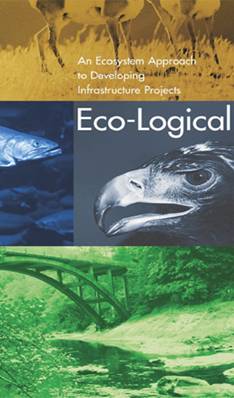
Caption: Image of the multi-agency Eco-Logical guide. The guide is downloadable at the FHWA Environment Website.
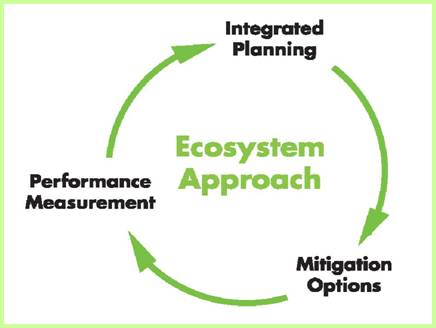
Caption: Eco-Logical uses an ecosystem approach within an ongoing cycle of integrated planning, mitigation options, and performance measurement leading back to integrated planning within the Eco-Logical cycle. Image shows a the Ecosystem Approach cycle represented by a circle of arrows where the concept of Integrated planning leads to Mitigation Options, which leads to Performance Measurement which leads back to Integrated Planning and the cycle continues.
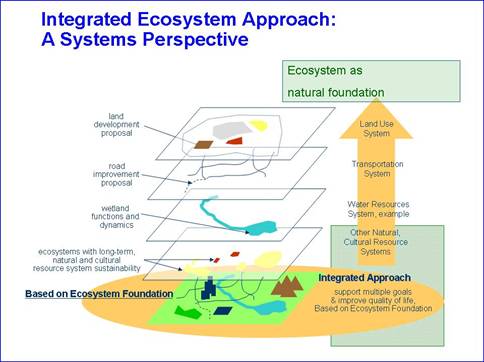
Caption: Eco-Logical is based on an ecosystem foundation with integration and effective interaction between systems and across jurisdictions to deliver multi-purpose benefits and improved quality of life. Image is of a slide diagram showing shows that - Ecosystems are the foundation that support land use, transportation, wetland and natural and cultural systems as the foundation of providing multiple purposes.
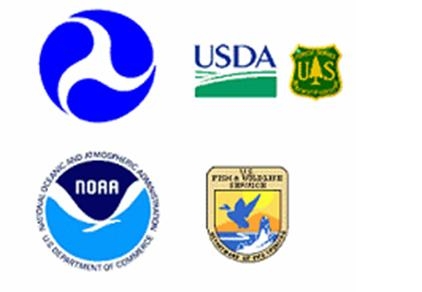
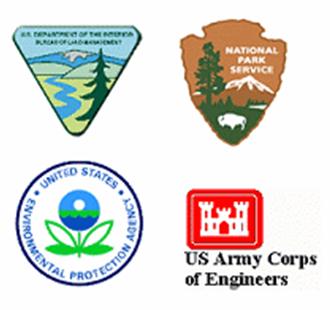
The Eco-Logical initiative and guide was developed by a multi-agency Steering Team of 8 federal agencies and 2 state departments of transportation as listed in this article*. Federal agency logos above include: U.S. Forest Service, U.S. Dept. of Agriculture; Federal Highway Administration, U.S. Dept. of Transportation; Bureau of Land Management, U.S. Dept. of Interior; U.S. Dept. of the Army; U.S. Fish and Wildlife Service, Dept. of Interior; National Park Service, Dept. of Interior; Office of Federal Activities, U.S. Environmental Protection Agency; Office of Wetlands, Oceans, and Watersheds, U.S. Environmental Protection Agency; and National Marine Fisheries Service, National Oceanic and Atmospheric Administration.
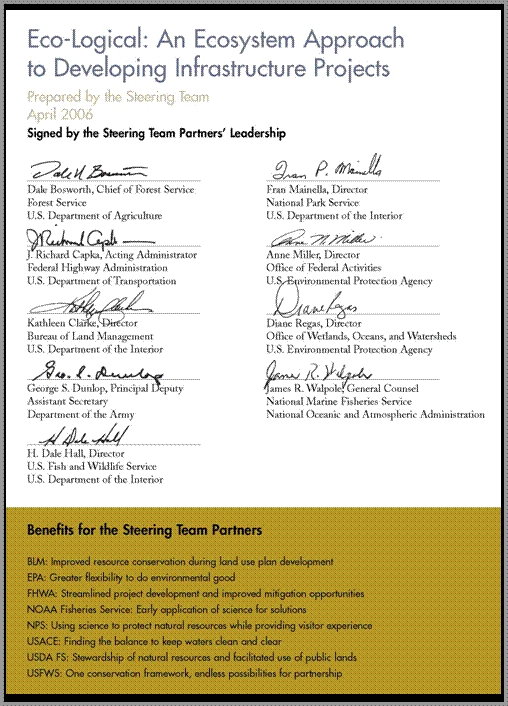
23 CFR 771 Updates for SAFETEA-LU Underway
By Carol Braegelmann, FHWA Environmental Protection Specialist & Michael Culp, FHWA Project Development Specialist, Office of Planning Environment and Realty
Regulations to reflect changes pursuant to the Safe, Accountable, Flexible, Efficient Transportation Equity Act: A Legacy for Users (SAFETEA-LU). In addition, other minimal modifications are proposed to better reflect current practice. The Office of Management and Budget (OMB) has determined preliminarily that the proposed revisions are not significant, in which case their review process would be abbreviated and a Notice of Proposed Rulemaking (NPRM) would be published in the next couple of months.
For SAFTEA-LU provisions that deal with modifications to the environmental review process, proposed regulation revisions would make the existing regulations and SAFETEA-LU provisions consistent to the extent that there are now inconsistencies. For example, to address section 6002 changes, the comment period for draft environmental impact statements which now provides for “not less than 45 days” would include a limit of not more than 60 days (with certain exceptions) and the statute of limitations for claims to be filed within 180 days of final decision publication is added. To accommodate new provisions dealing with NEPA delegation to the states, language to address instances where FHWA or FTA may not be the Federal lead agency in a NEPA process are also included.
In addition, SAFETEA-LU sections 3024 and 6010 provide for two new categorical exclusions (CEs) that are proposed to be added to the existing list of CEs. The first one enables FTA to participate in the acquisition of railroad right-of-way (ROW) prior to the completion of NEPA process for the project that would eventually use the railroad ROW. The second applies to both FTA and FHWA, and explicitly allows for appropriate activities that support the deployment of intelligent transportation infrastructure and systems to be classified as CEs.
Interested parties will receive more information over the next couple of months as the OMB process is concluded and the NPRM is published.FHWA and FTA are revising the National Environmental Policy Act (NEPA) implementing
NATIONAL PARK SERVICE LAUNCHES HISTORIC PRESERVATION LEARNING PORTAL
By Stephanie Stoermer, FHWA Environmental Program Specialist
The National Park Service (NPS) recently launched the Historic Preservation Learning Portal, an e-gov internet project developed in partnership with numerous agencies and organizations, including the FHWA. Described by the Federal Preservation Institute as a “powerful web-based tool for preservation professionals,” the Portal provides a fast, direct link to historic preservation information and training.
Designed to be user-friendly, the Portal employs a concept matching search that actively encourages the user to ask questions in plain language rather than relying on the more familiar keyword search. Portal users can search simultaneously across over 1000 indexed historic preservation websites for documents, training opportunities, and technical information.
Although the Portal was created primarily to help Federal agencies fulfill their responsibilities under the National Historic Preservation Act and Executive Order 13287, Preserve America, the site is a useful resource for states, tribes, local governments, and citizens. Although individuals do not have to be registered users in order to access many of the Portal’s features, Federal employees should register as new users to access all the features of the site.
To explore the potential of the Historic Preservation Learning Portal, please visit www.historicpreservation.gov website.
Environment Team Supports FHWA National Field Conference
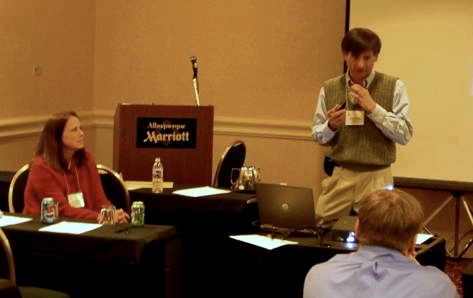
Caption: KLynn Berry observes Keith Harrison speaking to a class during CSS training. Photo by Don Cote.
By Dave Gamble, FHWA Environmental Program Specialist
From March 4th through March 9th, over 240 of FHWA’s field engineers and Division Office specialists attended the National Field Conference in Albuquerque, New Mexico … the Land of Enchantment. The conference was designed to provide the participants with access to senior management and training on a wide variety of topics. The goal of the conference was to ensure consistency in the delivery of the Federal-Aid Highway Program, enhance public funds management skills, share advances in technology, and develop of a wide range of professional relationships.
In past years, the conference had been a regional event, but this year, for the first time, it was held on a national scale.
During the first day and a half, a plenary session was conducted with key FHWA Leadership as the presenters. The remaining 3 days of the conference consisted of training delivered in a university-style format. Each attendee selected 18 hours of training from courses such as contract administration, cost estimation, fraud prevention, and even a course on how to more effectively balance work and personal life. Professionals from FHWA’s Headquarters Office, Resource Center, and Division Offices conducted the training.
Seventeen of the trainers were specialists from various Resource Center (RC) Technical Service Teams (TST). The RC’s Environment Team was well represented – with four of its members serving as instructors. Dave Gamble delivered several sessions on the always challenging Section 4(f) of the U.S. DOT Act, including the new de minimis provisions. David Grachen made presentations on various aspects of the National Environmental Policy Act. The topic of Context Sensitive Solutions was covered by KLynn Berry (who partnered with Keith Harrison from the RC’s Safety and Design team). Kevin Moody participated on a panel dealing with Construction Inspection and Emerging Technology, for which his focus was on using technology such as Global Positioning Satellites to monitor implementation of environmental commitments.
By most accounts, the conference was a success. The participants left enlightened about important environmental topics and enchanted about the great southwest.
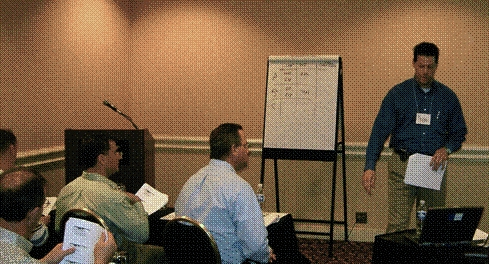
Caption: David Grachen stands at front of classroom during NEPA training. Photo by Dave Gamble.
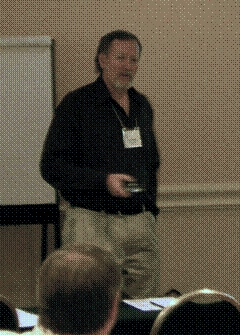
Caption: Dave Gamble standing in front of a class's during Section 4(f) training at the National Field Conference. Photo by Don Cote.
FHWA HQ and Resource Center Environment Staff Speak at Congestion Pricing Workshops
By Mary Ann Rondinella, FHWA Environmental Program Specialist
As part of the USDOT’s congestion relief initiative, FHWA hosted three congestion pricing workshops in March 2007. The purpose of the workshops was to provide State DOTs, MPOs, local governments and private sector companies an overview of congestion pricing and the solicitation for new Urban Partnership Agreements (UPA).
Congestion pricing is a bold new approach to reducing congestion. It is composed of four parts:
• Tolling or pricing to manage travel demand during peak periods.
• Transit to provide alternatives to those who cannot afford or do not wish to pay peak period tolls.
• Telecommuting as an option for employees to avoid commuting on some work days.
• Technology to improve traffic flow, including improved signal timing, real time traveler information, and efficient and cost-effective toll collection.
On December 8, 2006, the USDOT published a solicitation in the Federal Register, seeking applications from metropolitan areas to partner with the USDOT in a UPA. Under a UPA, USDOT’s partner metropolitan areas will commit to pursuit of aggressive strategies under the umbrella of the “Four Ts” listed above. The goal is to demonstrate success of this approach in reducing congestion in the short term. Applications are due on or before April 30, 2007. The workshops provided an overview of the application process and information about discretionary funding that may be available to Urban Partners.
FHWA Headquarters and the Resource Center (RC) teamed up to provide three speakers to provide an overview of the NEPA (National Environmental Policy Act) and project development process. Harold Peaks, Team Manager in the Headquarters Office of Project Development and Environmental Review, spoke at the Washington, D.C. workshop on March 21. Mary Ann Rondinella, RC Environmental Program Specialist, spoke at the Denver workshop on March 23. David Grachen, RC Environmental Program Specialist, spoke at the Atlanta workshop on March 30. The speakers also addressed participant questions about when to start the NEPA process, ways to streamline it, and the environmental justice implications of tolled facilities.
For more information about congestion pricing and the Urban Partnership Agreements, visit the Fight Gridlock Now website.
TAKING A VIRTUAL APPROACH TO COLLABORATION: REVISING THE TECHNICAL ADVISORY
By Stephanie Stoermer, FHWA Environmental Program Specialist
A virtual team, guided by Lamar Smith, is actively engaged in revising the Federal Highway Administration’s (FHWA) Technical Advisory Guidance for Preparing and Processing Environmental and Section 4(f) Documents (T.6640.8a). Over 40 individuals from FHWA Headquarters, the Resource Center, FHWA Division Offices and the Federal Lands Highway Division are contributing their time, energy, and technical expertise to bring the Technical Advisory into the 21st Century.
Over twenty-five years ago, the FHWA issued regulations (23 CFR § 771), Environmental Impact and Related Procedures to address the NEPA responsibilities established by Council on Environmental Quality (CEQ). The FHWA guidance complementing the regulations was originally issued on February 24, 1982 in the form of a Technical Advisory.
Commonly referred to as the “TA,” the Technical Advisory is intended to provide State Departments of Transportation and local agencies, as project applicants; FHWA field offices; and consultants with recommendations and information for preparing the documents and determinations required by the National Environmental Policy Act of 1969 (NEPA) and the FHWA project development process, including Section 4(f) evaluations.
The original 1982 guidance focused on environmental impact statements (EISs) and provided limited guidance on environmental assessments (EAs) and other environmental studies needed for a categorical exclusion (CE) determination or a finding of no significant impact (FONSI). The guidance was subsequently revised to provide expanded coverage to CE determinations, EAs, FONSIs, EISs, supplemental EISs, reevaluations, and Section 4(f) evaluations.
The second revised and expanded TA was issued on October 30, 1987 and been widely used to facilitate the NEPA process for transportation projects. Many State Departments of Transportation have used the TA to formulate their own internal NEPA guidance. Changes to environmental requirements and increased emphasis on stewardship and streamlining in transportation reauthorization laws (ISTEA, TEA-21 and SAFETEA-LU) have affected the way that the FHWA implements NEPA in project development over the years, however, and the 1987 version of the TA began to show its age.
The Technical Advisory Team was created shortly after the FHWA Environmental Conference in June of 2006. The intent in revising the TA is not to issue new guidance or prescribe additional requirements but rather to update and improve on FHWA’s existing NEPA guidance, so the third-generation version of the TA will closely follow the outline, scope and general intent of the previous guidance.
In order to share the workload more effectively, it was necessary to form smaller teams to revise existing topic areas and to address other topics that might be worthy of inclusion in the guidance. The topical area sub-teams have been meeting at the discretion of their respective Team Managers. The larger Technical Advisory Team continues to meet (via teleconference) on a monthly basis to provide progress reports, share information and to address any questions or concerns that may arise.
Taking a collaborative approach to revising a large technical guidance document can be challenging but this approach has proven both worthwhile and effective. If the progress made by the Technical Advisory Team so far is any indication, it is likely that the final guidance may be available in late fall of 2007.
Spring Brings Photo Opportunity – the 2007 Greener Roadsides Competition Begins
Once again, Greener Roadsides is hosting a contest to highlight the very best photos taken by Environmental Professionals nationwide. The deadline for this years contest is November 10, 2007 – but it is not too early to start snapping photos!
Districts or individuals may enter through their State FHWA Office. You may submit photos in more than one category but you may not send more than 3 photos in for any one category.
Categories include;
I – Planted Native wildflowers/grasses: Limit to native species in your area.
II – Planted Nonnative wildflowers: Non-native or garden wildflowers introduced into an area. (Photos of known invasive species cannot be accepted, see category VII.)
III – Protection: Focus on preserved native remnant vegetation or endangered plants characteristic of your area. Explain how you are protecting them.
IV – Public Awareness: Collect photos, brochures, whatever explains your public outreach effort, including Earth Day….please limit to 1-3 plastic sleeves.
V – Close-up: Chose your best plant species close-ups.
VI – Vegetation Management: Send examples of native woodland, wetland, or grassland restoration/mitigation, erosion control, reduced mowing results, landscaping, and integrated management methods for invasive's.
VII – Invasive Plants: Close-ups to identify, distant shots to show spread, or related activities.
VIII – Environmental Stewardship or Innovation. Demonstrating a land ethic, a new idea, or a partnership that every state must hear about!!!
IX - Neighbors: includes Federal Lands roads, refuge roads, tribal roads, Turnpike and County roads’ in above categories.
Although more information will be available online soon, here are some of the guidelines:
• Submit 8x10 photos. These photos become the property of FHWA and may be used brochures, public awareness campaigns, etc.
• Provide a brief description on the back of each photo (date, hwy. location, goal and/or names of key plants, State name, category, and name of photographer).
• Protect in plastic sleeves (in a 3 hole binder) when mailing.
• Send entries to: Editor, FHWA, 380 Jackson St., Suite 500
St. Paul, MN 55101-2904.
• It is advisable to use a traceable method of mailing.
• A multidisciplinary jury will review and determine winners in December.
See 2007 the spring issue of Greener Roadsides for last year’s winners!
If you have questions, contact Greener Roadsides’ Editor, Bonnie L. Harper-Lore at (651) 291-6104.

Caption: Photo of chipmunk standing behind a camera that has been placed on the ground as though he is getting ready to take a photo.

Caption: Photo of squirrel standing behind a camera placed on a tiny tri-pod. Photos taken by Scott Alan Johnson. Used with permission.
What's Going On?
Here are a few of the upcoming events of interest to the environmental community:
April 2007
April 22
Earth Day
April 27
Arbor Day
May 2007
May 13 - May 17
Coastal Sediments 2007
New Orleans, LA
May 20 - May 25
Int’l Conference on Ecology & Transportation (ICOET) “Bridging the Gaps, Naturally”
Little Rock, AR
June 2007
June 2
National Trails Day
Events Nationwide!
June 19 - 21
Southeastern Equestrian Trails Conference
Knoxville, TN
June 25 - 28
AASHTO Standing Committee on Environment
Asheville, NC
July 2007
July 6-7
TRB Environmental Analysis in Transportation Committee Workshop
Chicago, IL
July 7-9
TRB 2007 Summer Conference
Chicago, IL
July 7-9
TRB 32nd Annual Summer Ports, Waterways, Freight and International Trade Conference
Chicago, IL
July 9-11
Transportation and Air Quality Committee Summer Meeting
Orlando, FL
August 2007
August 28-30
Southern Transportation and Air Quality Summit 2007 Savannah, Georgia,
Contact: Mike Roberts, 404-562-3928, Michael.Roberts@dot.gov
For additional conferences and events, see FHWA's Planning, Environment & Realty calendar .
CONTACT INFORMATION:
Editor–in-Chief
Don Cote
Environment Technical Service Team (TST)
Team Manager
Phone: (720) 963-3210
don.cote@dot.gov
TST Editorial Board Members:
David Grachen, Brian Smith, and David Sullivan
FHWA Resource Center
Aung Gye
Office of Project Development &
Environmental Review, FHWA HQ
Managing Editor:
Marie Roybal,
FHWA Resource Center
marie.roybal@dot.gov
Due to Quarterly publication schedule, all article submissions for future issues are due to the Editor-In-Chief by the 15th of March, June, September, and/or December
*If you would like to receive this newsletter electronically, please send your email address to:
marie.roybal@dot.gov